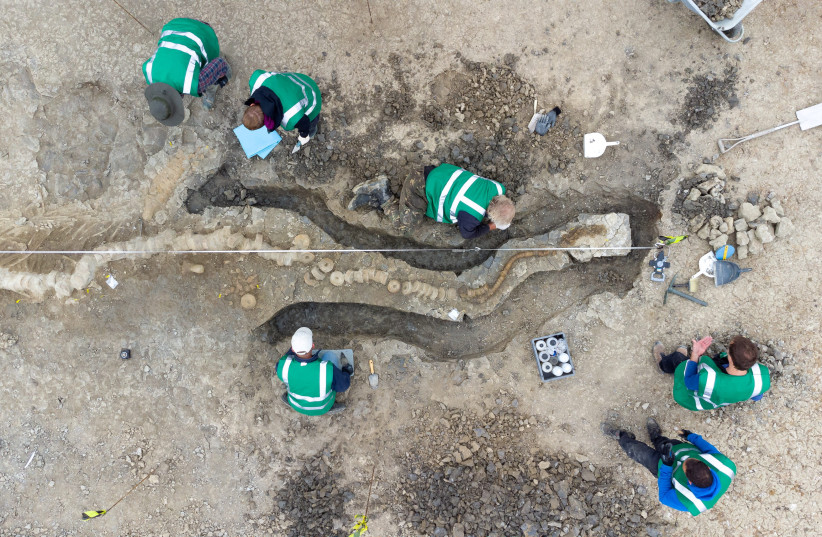The fossil of Britain's largest "sea dragon" (ichthyosaur) was unearthed in the Rutland Water Nature Reserve which is run in partnership with Anglian Water, the Leicestershire and Rutland Wildlife Trust reported on their website on Monday.
The fossil was first discovered by Rutland Water Conservation Team Leader Joe Davis during a routine draining of a lagoon island in February of 2021 and was carefully excavated over the last year.
Davis said he first noticed the fossil when what he thought were clay pipes looked too organic to him, so he pointed them out to Reserves Officer Paul Trevor.
"I worked out in the Hebrides, so I've found whale and dolphin skeletons before," he said. "This appeared similar, and I remarked to Trevor that they looked like vertebrae. We followed what indisputably looked like a spine, and Paul discovered something further along that could have been a jawbone. We couldn't quite believe it."
The fossil has been dated to about 180 million years ago and measures 10 meters in length with a skull weighing about a ton. Two incomplete and much smaller ichthyosaurs were found in the same reserve in the 70s, but this discovery is the largest complete ichthyosaur discovered in Britain.


"Rutland water has a long list of previous fascinating archaeological and palaeontological discoveries but none more exciting than this," said CEO of Anglian Water Peter Simpson. "We also recognize the significance a find like this will have for the local community in Rutland. Our focus now is to secure the right funding to guarantee its legacy will last into the future."
Anglian Water is currently trying to secure heritage funding that will allow the remains to be preserved and kept in Rutland where the fossil can be shared with the public.
"The finding has been absolutely fascinating and a real career highlight," said Davis. It's great to learn so much from the discovery and to think that this amazing creature was once swimming in seas about us, and now once again, Rutland Water is a haven for wetland wildlife albeit on a smaller scale."
Fossil evidence shows that ichthyosaurs first appeared 250 million years ago and went extinct 90 million years ago. They evolved from reptile species that later returned to the sea in a similar way to how ancestors of the dolphins and whales were land animals. The ichthyosaurs are nicknamed "sea dragons" due to their large eyes and teeth.
